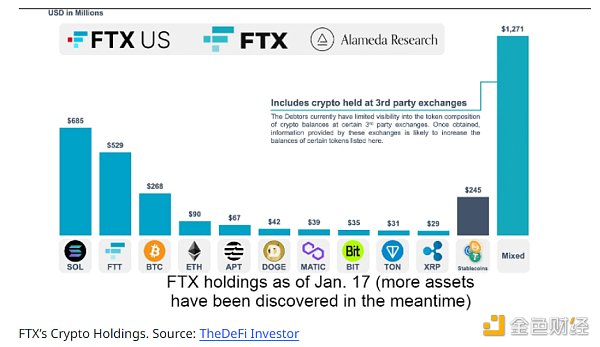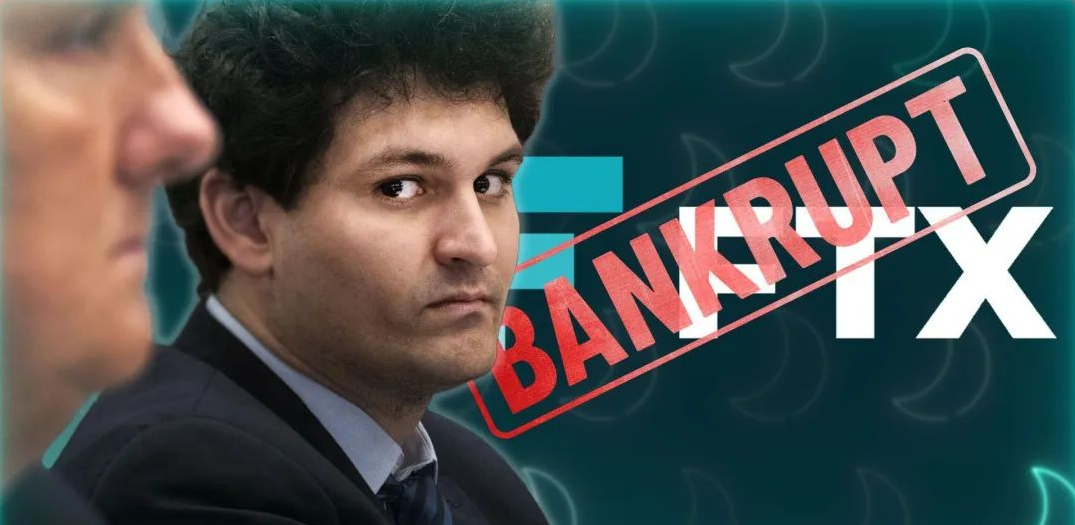Babbitt column | Tencent blockchains are strong, what is the opportunity for the public chain?
Author: Monte Carlo
First, Tencent blockchain
Tencent recently announced the "2019 Tencent Blockchain White Paper", which is Tencent's announcement of the white paper after the blockchain white paper was released in 2017.
I personally think that this white paper is very exciting and detailed. It has both theoretical and case explanations. I suggest that interested friends can look for it. I have spent a long time studying it and it is very rewarding. Compared with the white paper of 2017, the biggest difference between this white paper and the white paper should be that the planning of the year has gradually become a reality, and this time there are many cases of landing.
- Huawei has disclosed four blockchain related patents this month.
- US legislators consider enacting a bill to classify stable currency as securities
- Zuckerberg: Libra does not intend to replace sovereign currency and will expand US financial leadership
Tencent's blockchain white paper lists several examples that have been put on the ground, which are very representative:
The first one: Tencent and Shenzhen Taxation Bureau set up the “Zhi Tax” innovation laboratory, research and development tax chain, and open the whole process management of electronic invoice issuing, reimbursement, declaration and audit, helping the regulator to save costs and improve efficiency while paying taxes. People provide more personalized convenience services, and now more than 2,000 companies have been connected. As of the fifth anniversary of the blockchain electronic invoice on August 5, 2019, nearly 6 million invoices have been issued, which are open daily. There were 44,000 copies and the cumulative invoice amounted to 3.9 billion yuan.
The second: Tencent's joint partners to build a "micro-enterprise chain" supply chain financial platform, introduced Tencent Li Caitong, banks, private equity funds, factoring companies and other types of funding channels, successfully with Skyworth, McDonald's, Digital Guangdong, etc. More than ten core enterprises have cooperated. In May of this year, the non-specific debtor ABS project was approved to have a storage rack size of 10 billion, which greatly improved the financing dilemma of small and medium-sized enterprises, improved the operational efficiency and competitiveness of core enterprises, and expanded the business of financial institutions in a safer way. Scale has achieved a multi-party win-win situation.
The third one: In the judicial field, the infrastructure of the wisdom and justice field jointly established by Tencent and China Net An and Beiming Software has been approved by the Supreme People's Court, and a number of high-level people's courts have joined the letter chain to become the authoritative node. There are more than 10 million certificates on the chain. In addition to these, there are a large number of deposit certificates, game projects, blockchains + Internet of Things projects, etc. It feels that the Tencent blockchain has begun to plow in various fields and has gradually landed.
After reading Tencent's blockchain white paper, I actually have a little bit of worry about the public chain in the market, Tencent blockchain (of course, not only the Tencent blockchain, but also Alibaba's ant blockchain, Baidu's superchain Etc.) The development is so good that it will have a big impact on the development of existing public chain projects.
Compared with the popularity of the blockchain in Tencent, the current public chain project has been completely deserted, and it has not even been chilled. For example, EOS, as one of the most famous public chains, has been greatly criticized recently. In the past few days, an article has suddenly appeared on fire. The title is called "Block.one 檄文", which is considered to be the parent company of EOS. In addition to EOS, other public chains, such as many domestic public chains, have recently become obscure; and recently, there have been news of various "public chain" projects running and dissolving.
The coldness of the public chain project and the popularity of the blockchains in Tencent have formed a great contrast. We can't help but ask, under the strong attack of the blockchains in Tencent, is there a future for the public chain project? Where is its development direction? Will the Tencent blockchains become the mainstream of the future?
Second, the comparison between the blockchain and the public chain in Tencent
In fact, think carefully,
These giant Internet companies have sufficient financial advantages. Many of their funds are difficult to achieve in traditional public-chain projects. Tencent blockchains can last for a long time without financing, and even after several rounds of bulls and bears are no problem; At the same time, they have the advantage of talents. Most of the Internet elites in China are in these Internet giants, among which there are a large number of technical cattle people; they have ecological advantages, such as Tencent's WeChat payment, WeChat chat, red envelope and its various ecosystems, which directly cover the good Hundreds of millions of C-end users and B-side SMEs; at the same time they have policy advantages, they have close cooperation with the Supreme People's Court, government agencies at all levels, if Tencent wants to deep cooperation with them in the blockchain is also easy a lot of.
I personally feel that at this stage, if you simply compare which type of blockchain project first landed, the traditional public chain is more than the distributed accounting class of the Tencent blockchain. Take a service TBaaS launched by Tencent as an example. It is built on the cloud. Compared to public accounts, special accounts, wallets, and apps, organizations that want to use TBaaS services only need to register. Even without downloading the client, you can operate directly on the cloud. Moreover, the Tencent blockchains have many business contacts with the organizations that use these services. These public link projects cannot be combined with the Tencent blockchain in terms of technology, products, or user experience. In contrast, the Tencent blockchain landing is much easier.
We once ridiculed these Tencent blockchains, saying that they can't be called blockchains at all. They say that they are just private chains and alliance chains. They say that they are just distributed accounting projects, saying that they do not exist at all. Block "this thing. But in fact, even if they are just distributed accounting projects, as long as they can use the distributed accounting system architecture to get through the last 1 km of cross-center information transfer, as long as distributed collaboration can be carried out under this framework, it can be realized. Solve problems and play a role in it.
Basically, it can be said that all the Tencent blockchains can do, the current public chain can not compete with the Tencent blockchain; the only opportunity for the public chain is the part of the Tencent blockchain that can't be done.
With such a comparison, the public chain project seems to be lagging behind in all aspects. It seems that the public chain project has no chance at all. Is this really true?
Third, the advantages of the public chain
I don't think the situation is so pessimistic. Although the distributed accounting projects of the Tencent blockchain are leading in terms of capital, technology, talent, ecology and government, they have one of the most deadly weaknesses. That is, they can't dock digital currency .
The inability to dock digital currency means that all projects related to digital currency can't do it. They can't do anything related to Bitcoin. They can't do it with Ethereum related projects. They can't do it with EOS related projects. They can't do with USDT related projects. If Libra can land in the future, Libra related projects. Can't do it either.
This is a very important structural flaw in the alliance chain and distributed accounting projects of the Tencent blockchain, and it is also the advantage and opportunity of the public chain project. This advantage can be broken down into many specific areas, such as:
1. Payment field
For example, in the field of digital currency payments, the Tencent blockchains cannot intervene.
The core function of digital currency is payment, especially cross-border payment. Distributed accounting projects can't realize the function of payment because there is no digital currency, but public chain projects can.
Although many public chains are not directly used for payment, as long as the size of the public chain is large enough, the market value is high enough, and the liquidity is good enough, it can bear a certain degree of currency and payment. For example, ETH and EOS are supported in many places. Payment; Moreover, many public chains have issued USDT. Although the public chain token cannot be paid directly, the USDT on the public chain may be directly paid; for example, various applications in the public chain ecology can make Public chain tokens are quickly converted into payable digital currencies.
When we travel abroad, we can take out the wallet and scan it directly to realize the transfer of digital currency, which can be used to buy coffee and eat bread. In terms of payment, the public chain projects are actually bitcoin light, thanks to Bitcoin!
The payment field is a major difference between the public chain and the distributed accounting project. This is a strategic highland. If the public chain project wants to develop well, it must seize this strategic highland.
2, Defi financial field
Since the Tencent blockchain can't handle the business related to digital currency, they can't handle the derivative business of digital currency, for example, Defi Finance, which is now very hot.
Although Defi Finance is still in the early stages of development, it is basically limited to the simple function of mortgage loans, but the functions can be gradually expanded, and now there are more and more public-chain projects for Defi Finance, and the functions are indeed slowly rich.
As Chang Yu said:
“ICO is just the tip of the iceberg of virtual finance. DeFi is the iceberg itself, a place where the blockchain is truly valuable to the financial industry.”
DeFi Finance is a very huge market. Which public chain can win this market, which public chain can live very moist. DeFi Finance is based on the original digital currency, and the Tencent blockchain does not have digital currency, so DeFi Finance may have nothing to do with the Tencent blockchain, regardless of future development.
DeFi Finance should be regarded as the second strategic location of the public chain project, and the public chain must also seize it.
3, cross-chain field
Similar things are also cross-chained.
Cross-chain is based on the blockchain. The core feature is the conversion and trading between different blockchain tokens. Because it also involves digital currency, no matter how powerful the Tencent blockchain is, no matter how much they want to participate, they can't participate. They can only watch this piece of the traditional public chain project, just to see which chain can ultimately Stand out from the crowd.
Cross-chaining is a very troublesome technical problem, and now it seems that this is simply "happy troubles."
4, the asset is on the chain
There is a field that has been placed high hopes by us. We believe that only blockchain can be done, more specifically, only public chain projects can be done, and this market is also very large, waiting for the day when the public chain occupied this market. It may be the day when the blockchain really matures. This field is called "asset-winding."
Then, what is considered to be the future of the blockchain, the “asset-winding” field, will it be the world of the public chain, or the world of the Tencent blockchain?
I think it depends on the specific assets.
If it is music copyright, film rights, patents, contracts, warehouse receipts, I think Tencent blockchains have a strong competitive advantage. On the one hand, they have music, film and television, supply chain business, and related The business parties have a cooperative relationship; at the same time, they already have a blockchain that can be verified, and the most important of these types of assets is the deposit and confirmation; not to mention, Tencent and the various government agencies themselves have established a close relationship. Partnerships, there are many places in these businesses that need to work with the government, and it is much easier for government agencies to accept Tencent than to accept public chains.
If it involves a large number of original digital assets, or involves a new-passed economy, even if it is linked to the digital currency, it is not a public chain. For example, the most famous is the USDT. In fact, the USDT is essentially the winding of the USD asset, but this piece involves monetary sovereignty and must be run on a system with strong decentralization characteristics. In the traditional distributed accounting project. It is definitely not going to work.
However, there are a large number of assets in the middle, such as asset securitization, such as trust assets, such as non-listed company equity, such as claims, these traditional financial assets in the future is the "intra-meal" of the Tencent blockchain, or public What is the "base" of the chain project? I think it is still uncertain for the time being. This will be the main battlefield for direct competition between the two sides in the future .
Why is the competitive advantage of this Tencent blockchain not so big? Because Tencent has done a lot of business for the public business, but the real financial business is still doing relatively little, this piece of their experience is not necessarily enough; and the financial field is after all the country's fundamental, involving national security, social stability, It is still necessary to take safety as a priority. Besides, the financial institutions themselves are strong. They are entirely likely to make a coalition chain. For example, they may be led by UnionPay or a securities management unit to form a special and special alliance chain. Maybe they are Will not first consider Tencent's alliance chain. In contrast, they are even more likely to use the traditional workload proof public chain project to ensure security.
The digitization of traditional financial assets is a very big cake. This cake is currently multi-stakeholder, but it is still in the infrastructure stage. It does not see which side has obvious advantages, and it does not see which side has The obvious disadvantage is that in the future, whoever will fall in the dead will still need to continue to observe.
Fourth, the conclusion
The blockchains of Tencent and the public chain together constitute the entire blockchain industry; the landing of the blockchains in Tencent is also the overall landing of the blockchain industry.
Tencent blockchain and public chain, both of which have competition and cooperation, the current competitive landscape is like this:
1. In the To C end and non-financial business areas, public chain projects are difficult to compete with the Tencent blockchain;
2. In the field of native digital currency and related derivative fields, it is difficult for Tencent blockchains to compete for public chain projects;
3. In the traditional financial field, both sides have opportunities, and the public chain may be slightly superior, but at the same time they have to face the impact of the dedicated alliance chain in the financial sector.
We will continue to update Blocking; if you have any questions or suggestions, please contact us!
Was this article helpful?
93 out of 132 found this helpful
Related articles
- PayPal can not escape the blockchain "true incense law"
- Libra "soft" with the G7
- Sudden! V God turns on the AMA answer mode to see what kind of "difficulty" he has encountered.
- Bitcoin vs. US Dollar: Who has value support?
- Viewing the Status Quo of Blockchain from "Byzantine Compassion" and the original sin of Nakamoto
- The witness said: I participated in the Wuzhen Conference last year, why did you want to come this year?
- Interview with BitMax.io Cao Jing: Compliance, Localization and Traffic Integration, Exchange Status and Future






